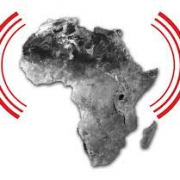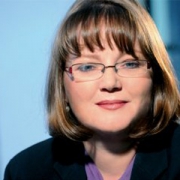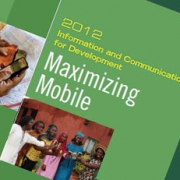Experimenting with Youth ICT Projects in Dadaab Refugee Camp
I have been searching online for the past couple of weeks for signs on people working on ICT4D projects in the refugee camps in the Horn of Africa. Through a reference from a friend I stumbled upon the news page for Voices of Africa for Sustainable Development (VOA4SD). The Dadaab mission team is doing on the ground ICT4D work, often shooting from the hip and trying to see what works. Though this approach isn’t ideal, I have to hand it to them for working in the camps themselves. Their experiences are ones that we should all learn from regarding ICT4Education projects, ICT in Humanitarian crises, and youth in development.
To quickly explain the context of the VOA4SD Dadaab mission team’s experience thus far, three young VOA4SD members arrived at Dadaab Refugee Camp on July 20th. Their first goal was to deliver medical equipment from GIZ, the German Development Organization. After successfully delivering the equipment, they documented any ICT access, needs, and current projects in the camp. They stayed in the camp until August 1, 2011, upon which they returned to Nairobi to create a more comprehensive ICT strategy, DadaabNet, for the camps with other important stakeholders.
Now, DadaabNet is a Global Giving initiative, attempting to raise $10,000 to create the youth-run radio station, as well as providing computers and Internet access for interim schools and health centers.
The VOA4SD experience in their own words from their blog:
- Day one – Ifo Camp:
- “It was not long before we saw an internet cafe. After speaking to the owner to establish his needs and those of the camp we quickly ascertained that the youth were in desperate need of something to fill their time and they already loved ICT. Everyone was using internet via the mobile phones, but do not know how to transfer the skills to a computer. Facebook was said to be extremely popular among the youth with photos being a prized possession. One disabled young man we met had been traveling more than 20 km twice a week by matatu to take computer studies courses. His motivation was truly amazing. He enthusiastically said that he believed all the youth in Dadaab would love to learn how to use computers and they already their phones to post to Facebook in Arabic.”
- Day four – Formed a proposal for DadaabNet:
- “DadaabNet will bring wireless information, communications, and education to Dadaab, the world’s largest refugee camp. Our mission is to create a youth run community Internet service and education provider. The project will bring a wireless intranet, internal camp/refugee communications system and the lowest cost internet access throughout Dadaab and the nearby vicinity. Intranet will host free educational materials including videos made in Somali to be accessed through mobile phones and computers. We will make available educational materials pertaining to health, nutrition, sanitation, as well as education resources on computer training and how to use technology for sustainable development. The structure works like this: To view the materials a refugee would give their name, email, and mobile phone number. This becomes the base for our youth communications system. This will empower the youth to be managers of their own communications networks with management and oversight from the NGO partners. Youth can create networks within the system, take courses, become peer trainers, and will gain the skills necessary for employment both inside and outside of the camp. Internet will be made available at a low rate to increase affordability.”
- Day five – meeting with Norweigan Refugee Council on their Youth Empowerment Program:
- “We spoke to them and quickly established both their need and the programmes’ need for ICT infrastructure and training. The youth empowerment training includes life skills, basic computer skills, numeracy and literacy, plus a choice of vocations: masonry, hair dressing, electronics, and tailoring. According to the YEP manager, the students have shown immense interest in computer studies with a majority of youth enrolling in the program to have a chance to learn how to use a computer. The first stop was the teacher’s lounge. David called together the teachers, 12 in total so we could be introduced. The teachers were primarily local Kenyan staff and were very welcoming. When we shared the idea about DadaabNet, bringing in a new ICT4D curriculum, and lower cost equipment. They were eager to tell us how they were going to use it in their classrooms. The computer teacher currently has no internet so he was the first to want to engage the students online. He showed us the one simple dongle that was used by all the teachers for internet. It was the only access in the school and they all had to share, leaving little time for learning new skills and gathering educational content for their classes. The hair dressing teacher said she would use the internet to show her students different styles of hair design and she had heard somewhere that there were websites that would show the students different hairstyles on the same head. I laughed as this is one of my seven year old daughter’s favourite online games. The electronics teacher was also eager to have access so that he could show his students diagrams of the equipment they are repairing and use online materials to teach them how to repair computers in addition to the mobile phones they are learning to repair now. All of the teachers were supportive and you could see their heads filling with positive ideas with the mention of increased technology and improved internet access.”
- Day seven – Youth Targeted by Militants:
- “It is my understanding that the extremists target youth aged 15-24 most intensively. They are young, easily trained, and because for the culture have great respect for authority. This is the very reason why WE are people who want a free and just world without violence must also recruit the minds and hearts of these young and vulnerable. If we can reach them with education, opportunities for self-employment, ways to advance out of the misery, we can become a beacon of hope. The darkness is so heavy in the air that you can feel it on your skin and no amount of bathing can take it away. Just to smile and talk about the potential of a future with these youths has shown me that they are still reachable. …The NRC organization has the only youth programs in the Dadaab area. Their efforts are commendable and we are working through the appropriate channels for partnership. Yet their current program can only reach a maximum of 600 youth due to lack of space and facilities and there are more than 1000 youth showing up EACH WEEK in need of hope and support.”
- Day 10 and summary of needs:
- “The refugees we spoke to as well as other NGOs really want a radio station run by the youth for the youth. With the implementation of DadaabNet this is a simple and low cost program. We hope to work in conjunction with the media team from UNHCR and Lutheran World Foundation. What is great about this idea is that it could be used as a platform to teach the refugees about their rights and the laws which are meant to protect and support them such as the 1951 UN Refugee Convention, the Kenyan Refugee Act, and the new Kenyan constitution. Most of the refugees we spoke to had no knowledge of any of these documents despite being the prevailing jurisdiction controlling their lives.”
What can we learn from VOA4SD’s experience in the camp?
- There is a huge lack of infrastructure and communication capabilities in refugee camps. ICTs of any sort are helpful.
- The youth are idle in refugee camps and spend the little money they have on computer access. Clearly, then, they have the time and the desire to learn how to use ICTs. If nothing else, ICTs can at least distract children from getting involved with rebel groups, terrorist organizations, or gangs.
- Young refugees are familiar with the problems in the camps and can quickly identify various ways in which ICTs could solve problems.








































